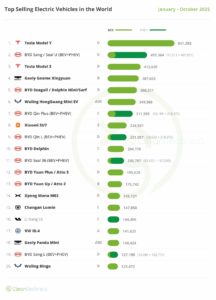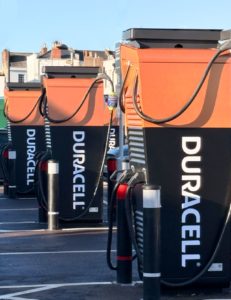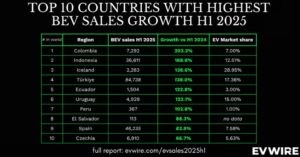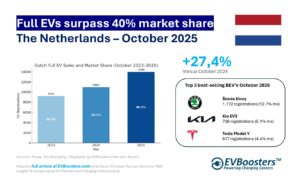Why is This Investment Crucial?
The EU’s focus on HDV charging highlights the shift from passenger EVs to commercial and freight electrification. While passenger EV infrastructure has been largely developed through national programs like Deutschlandnetz, HDV charging has lagged due to the high costs of megawatt-scale charging stations. The key reasons this investment is vital include:
Bridging the Gap in HDV Charging: Unlike passenger EV charging, HDV infrastructure requires ultra-fast, high-power stations that can support long-haul freight transport.
Supporting the EU’s Climate Goals: The funding aligns with the European Green Deal, reducing carbon emissions in the logistics sector.
Encouraging Private Investment: With major energy and mobility companies investing in HDV charging, the funding will accelerate the transition to zero-emission logistics.
Who Received the Most Funding?
The AFIF 2 funding has been distributed among several key players in the European EV charging landscape. Below are the top recipients and their plans for the funding:
1. Milence – 111.500.000 Euros
Charge Points: 548 HDV charge points
Countries: Netherlands, Belgium, Germany, France, Sweden, Denmark, Italy
Usage: Milence, a joint venture between Daimler Truck, Volvo Group, and TRATON GROUP, focuses entirely on HDV charging. Their funding will enable the deployment of 548 HDV charging stations in key logistics corridors across multiple European countries.
Impact: This investment is crucial for long-haul electric trucking, providing high-capacity megawatt chargers at strategic locations.
2. E.ON Drive Infrastructure – 45.300.000 Euros
Charge Points: 932 LDV, 427 HDV charge points
Countries: Germany, Sweden, Denmark, Czech Republic, Slovakia, Hungary, Poland, Romania, Bulgaria, The Netherlands, Italy and Lithuania
Usage: E.ON will use its funding to roll out a total of 1.459 charging stations, making it the biggest recipient for mixed-use infrastructure (both LDV and HDV charging).
Impact: This deployment will enhance urban and highway corridor charging, supporting both passenger and commercial electric fleets.
3. Axionet – 26.800.000 Euros
Charge Points: 96 LDV, 400 HDV charge points
Countries: Romania
Usage: Axionet is focusing primarily on HDV infrastructure, installing 400 charge points across Romania.
Impact: This will play a crucial role in Eastern Europe’s transition to electric freight transport.
4. BP Pulse – 26.100.000 Euros
Charge Points: 230 HDV charge points
Countries: Germany, Netherlands, Austria
Usage: BP Pulse’s investment will be used exclusively for HDV charging infrastructure, enhancing Europe’s highway network for electric freight.
Impact: The new charging hubs will provide high-power solutions for electric trucks, reducing range anxiety for fleet operators.
5. Voltix – 23.100.000 Euros
Charge Points: 100 HDV charge points
Countries: France
Usage: Voltix is developing a dedicated HDV charging network in France.
Impact: This will improve freight electrification along key industrial routes.
Other notable recipients include Ignitis Group (16.000.000 euros, 500 LDV charge points in the Baltics), Repsol (6.480.000 euros, 286 LDV charge points in Spain), and Colruyt (6.050.000 euros, 24 HDV charge points in Belgium).
The Future of HDV Charging in Europe
This is just the beginning of a larger shift towards electrified freight transport. The growing demand for HDV and LCV charging will require additional investments, with industry experts estimating that billions of euros will be needed by 2030 to develop a fully functional network across the EU.
The AFIF 2 funding round is a key step in building this infrastructure, setting the stage for more investment in the coming years. With the rapid deployment of HDV charge points, Europe is on its way to becoming a leader in sustainable freight transport, ensuring a cleaner and more efficient future for logistics across the continent. Let’s go!
Source: AFIF 2, European Climate, Infrastructure and Environment Executive Agency (CINEA)







